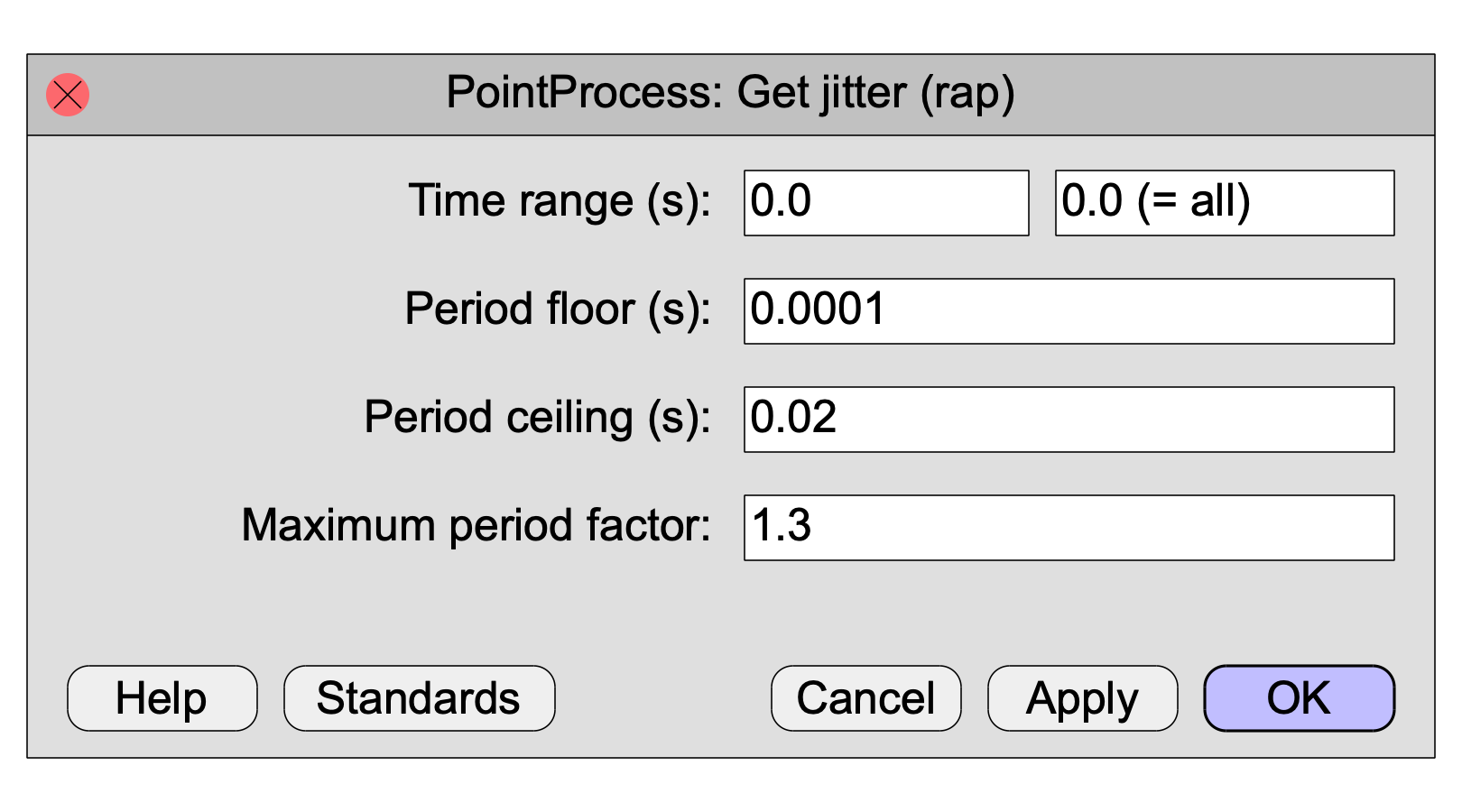
|
A command that becomes available in the Query submenu when you select a PointProcess object.
This command will write into the Info window the Relative Average Perturbation (RAP), a jitter measure defined as the average absolute difference between an interval and the average of it and its two neighbours, divided by the average interval (an interval is the time between two consecutive points).
As jitter is often used as a measure of voice quality (see Voice 2. Jitter), the intervals are often considered to be glottal periods. For this reason, the command has settings that can limit the possible duration of the interval (or period) or the possible difference in the durations of consecutive intervals (periods).

The RAP can be used as a measure of voice quality; it is the second most common jitter measurement (after local jitter). See Voice 2. Jitter.
Relative Average Perturbation is defined in terms of three consecutive intervals, as follows.
First, we define the absolute (i.e. non-relative) Average Perturbation (in seconds):
| absAP(seconds) = ∑i=2N-1 |Ti - (Ti-1 + Ti + Ti+1) / 3| / (N - 2) |
where Ti is the duration of the ith interval and N is the number of intervals. If an interval Ti-1 or Ti or Ti+1 is not between Period floor and Period ceiling, or if Ti-1/Ti or Ti/Ti-1 or Ti+1/Ti or Ti/Ti+1 is greater than Maximum period factor, the term |Ti - (Ti-1 + Ti + Ti+1) / 3| is not counted in the sum, and N is lowered by 1 (if N ends up being less than 3, the result of the command is undefined).
Second, we define the mean period as
| meanPeriod(seconds) = ∑i=1N Ti / N |
where Ti is the duration of the ith interval and N is the number of intervals. If an interval Ti is not between Period floor and Period ceiling, or if Ti-1/Ti or Ti/Ti-1 is greater than Maximum period factor and Ti+1/Ti or Ti/Ti+1 is greater than Maximum period factor, the term Ti is not counted in the sum, and N is lowered by 1; this procedure ensures that in the computation of the mean period we use at least all the intervals that had taken part in the computation of the absolute average perturbation.
Finally, we compute the Relative Average Perturbation as
| RAP = absAP(seconds) / meanPeriod(seconds) |
The result is a value between 0 and 2, or between 0 and 200 percent.
© ppgb 20221202